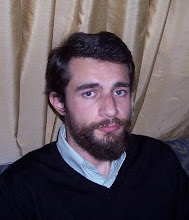Inhibition of an ongoing reaction tendency for adaptation to changing environments is a major function of the human prefrontal cortex. This function has been investigated frequently using the go/no-go task and set-shifting tasks such as the Wisconsin Card Sorting Test (WCST). Studies in humans and monkeys suggest the involvement of the dorsolateral prefrontal cortex in the two task paradigms. However, it remains unknown where in the dorsolateral prefrontal cortex this function is localized, whether a common inhibitory mechanism is used in these task paradigms and how this inhibitory function acts on two different targets, i.e. the go response in the go/no-go task and the cognitive set in the WCST. In the go/no-go task of this study, subjects were instructed to either respond (go trial) or not respond (no-go trial), depending on the cue stimulus presented. The signals of functional MRI (fMRI) related to the inhibitory function should be transient by nature. Thus, we used the temporal resolution of fMRI (event-related fMRI) by which transient signals in go and no-go trials can be analysed separately and compared with each other. We found a focus that showed transient no-go dominant activity in the posterior part of the inferior frontal sulcus in the right hemisphere. This was true irrespective of whether the subjects used their right or left hands. These results suggest that the transient activation in the right inferior prefrontal area is related to the neural mechanism underlying the response inhibition function. Furthermore, this area was found to be overlapped spatially with the area that was activated transiently during cognitive set shifting in the WCST. The transient signals in the go/no-go task peaked 5 s after the transient expression of the inhibitory function, and the transient signals in the WCST peaked 7 s after the transient expression, reflecting different durations of neuronal activity in the two inhibitory task paradigms. These results imply that the right inferior prefrontal area is commonly involved in the inhibition of different targets, i.e. the go response during performance of the go/no-go task and the cognitive set during performance of the WCST.
Seiki Konishi , Kyoichi Nakajima , Idai Uchida , Hideyuki Kikyo , Masashi Kameyama , and Yasushi Miyashita
Common inhibitory mechanism in human inferior prefrontal cortex revealed by event-related functional MRI
Bain 122: 981-991.
http://brain.oxfordjournals.org/cgi/content/full/122/5/981
Subscribe to:
Post Comments (Atom)

No comments:
Post a Comment